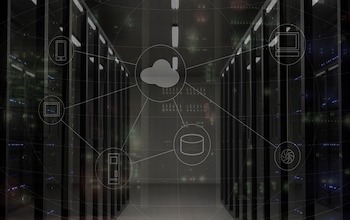
SAP (Systems, Applications, and Products in Data Processing) is a cornerstone in the realm of enterprise resource planning (ERP). With a rich history of innovation, SAP provides integrated solutions that help businesses streamline processes, enhance operational efficiency, and improve decision-making. Understanding the various SAP modules is crucial for professionals looking to leverage the full potential of SAP systems. This blog delves into the key SAP modules, outlining their functions and importance in the corporate world.
SAP Financial Accounting (FI)
The SAP Financial Accounting (FI) module is fundamental for managing financial transactions within an organization. It serves as the backbone for financial processing and reporting, ensuring that the financial data is accurately recorded and available for decision-makers.
Key Functions and Features:
1. General Ledger Accounting: Manages all of the company’s financial transactions in a comprehensive and detailed manner. It ensures that all financial data is properly tracked and reported.
2. Accounts Payable: Handles all payments that the company needs to make to vendors. This includes managing invoices, processing payments, and maintaining vendor accounts.
3. Accounts Receivable: Manages incoming payments from customers. This feature tracks customer invoices, monitors payment status, and ensures timely collections.
4. Asset Accounting: Deals with the management of the company’s fixed assets. This includes tracking asset purchases, depreciation, and retirement.
5. Bank Accounting: Manages bank transactions and bank statements, ensuring that all banking activities are accurately recorded.
6. Consolidation: Enables the consolidation of financial data from various entities within the organization, facilitating comprehensive financial reporting.
Importance of FI:
The FI module is critical for maintaining accurate financial records, ensuring regulatory compliance, and providing insights into the company’s financial health. It aids in strategic planning by offering detailed financial reports and analysis, helping organizations make informed decisions.
SAP Controlling (CO)
The SAP Controlling (CO) module complements the FI module by focusing on internal reporting and management accounting. It is designed to provide information for management decision-making, planning, and monitoring.
Key Functions and Features:
1. Cost Element Accounting: Tracks and categorizes costs incurred by the organization, providing a detailed view of cost distribution.
2. Cost Center Accounting: Monitors the costs associated with specific departments or units within the organization. This helps in managing budgets and controlling expenditures.
3. Internal Orders: Manages costs related to specific internal projects. This feature tracks costs from initiation to completion, ensuring that projects stay within budget.
4. Activity-Based Costing (ABC): Allocates overhead costs more accurately by associating costs with activities that generate them. This provides a clearer picture of cost drivers.
5. Profit Center Accounting: Analyzes the profitability of different business segments or product lines. This helps in understanding which areas are most profitable and where improvements can be made.
6. Product Cost Controlling: Manages and analyzes costs associated with manufacturing processes. This includes planning, monitoring, and controlling production costs.
Role of CO:
The CO module is pivotal for internal cost management and profitability analysis. It provides detailed insights into cost structures and performance, helping organizations optimize resource allocation, control costs, and improve profitability.
SAP Sales and Distribution (SD)
The SAP Sales and Distribution (SD) module is essential for managing the entire sales process, from order creation to delivery and billing. It ensures that sales operations are efficient and customer satisfaction is maintained.
Key Functions and Features:
1. Sales Order Processing: Manages the creation, processing, and tracking of sales orders. This includes handling various sales documents like quotations, orders, and contracts.
2. Pricing and Billing: Manages pricing agreements, discounts, and billing processes. This ensures accurate invoicing and revenue recognition.
3. Shipping and Delivery: Oversees the logistics of shipping and delivery, including picking, packing, and transportation. This ensures timely and accurate deliveries.
4. Customer Master Data Management: Maintains comprehensive information about customers, including contact details, credit limits, and transaction history.
5. Credit Management: Monitors customer credit limits and payment behaviors to mitigate the risk of bad debts.
6. Sales Reporting and Analytics: Provides detailed reports and analytics on sales performance, helping to identify trends, opportunities, and areas for improvement.
Importance of SD:
The SD module is crucial for managing customer relationships and sales operations. It ensures that sales processes are streamlined and efficient, leading to higher customer satisfaction and increased revenue. The module’s robust reporting capabilities help in making strategic sales decisions and improving overall sales performance.
SAP Material Management (MM)
The SAP Material Management (MM) module plays a crucial role in managing the supply chain and procurement activities within an organization. It ensures that materials are available in the right quantity, at the right time, and at the right place to meet production and operational needs.
Key Functions and Features:
1. Procurement Process: Manages the complete procurement cycle, from requisition creation to purchase order processing and vendor selection.
2. Inventory Management: Monitors stock levels, manages stock movements, and performs physical inventory counts to ensure accurate inventory records.
3. Material Requirement Planning (MRP): Forecasts material requirements based on production schedules and sales orders, ensuring timely procurement and optimal inventory levels.
4. Invoice Verification: Ensures that invoices from vendors are accurate and match the corresponding purchase orders and goods receipts.
5. Vendor Management: Maintains comprehensive information about vendors, including performance metrics and transaction history.
6. Warehouse Management: Manages warehouse operations, including goods receipt, storage, and issuance, to optimize warehouse space and improve inventory accuracy.
Role of MM:
The MM module is vital for efficient supply chain management and procurement. It helps organizations manage their materials and inventory effectively, reducing costs and ensuring smooth production processes. By providing real-time visibility into inventory levels and procurement activities, the MM module supports better decision-making and operational efficiency.
SAP Production Planning (PP)
The SAP Production Planning (PP) module is designed to streamline and optimize production processes. It integrates with other SAP modules to ensure that production activities align with business goals and market demand.
Key Functions and Features:
1. Demand Management: Forecasts customer demand and integrates it with production planning to ensure that production schedules meet market needs.
2. Material Requirement Planning (MRP): Plans material requirements for production based on demand forecasts, production schedules, and inventory levels.
3. Production Orders: Manages the creation, scheduling, and tracking of production orders, ensuring that production activities are executed as planned.
4. Capacity Planning: Analyzes and plans production capacity to ensure that production resources are utilized efficiently.
5. Bill of Materials (BOM): Maintains detailed information about the components and materials required for production, ensuring accurate material planning and procurement.
6. Shop Floor Control: Monitors and controls production activities on the shop floor, providing real-time visibility into production status and performance.
Importance of PP:
The PP module is crucial for optimizing production processes and ensuring that production schedules align with demand. It helps organizations reduce production costs, minimize waste, and improve product quality. By providing detailed insights into production activities and resource utilization, the PP module supports continuous improvement and operational excellence.
SAP Human Capital Management (HCM)
The SAP Human Capital Management (HCM) module focuses on managing an organization’s human resources. It covers a wide range of HR activities, from recruitment and onboarding to performance management and payroll processing.
Key Functions and Features:
1. Personnel Administration: Manages employee data, including personal information, employment history, and job assignments.
2. Recruitment: Supports the recruitment process, from job posting and applicant tracking to hiring and onboarding.
3. Organizational Management: Defines and manages the organizational structure, including departments, positions, and reporting relationships.
4. Time Management: Tracks employee working hours, absences, and attendance, ensuring accurate time recording and compliance with labor regulations.
5. Payroll: Manages payroll processing, including salary calculations, tax deductions, and benefits administration.
6. Performance Management: Supports performance appraisals, goal setting, and development planning to enhance employee performance and career growth.
7. Learning and Development: Manages training programs and employee development initiatives to build skills and competencies.
Role of HCM:
The HCM module is essential for effective human resource management. It helps organizations attract, develop, and retain talent, ensuring that employees are aligned with business objectives and motivated to perform at their best. By providing comprehensive HR data and analytics, the HCM module supports strategic HR planning and decision-making.
SAP Customer Relationship Management (CRM)
The SAP Customer Relationship Management (CRM) module is designed to support all customer-related processes. It helps organizations manage interactions with current and potential customers, aiming to enhance customer satisfaction and drive sales growth.
Key Functions and Features:
1. Sales Force Automation: Automates the sales process, including lead management, opportunity tracking, and sales forecasting, to improve sales efficiency.
2. Marketing Management: Manages marketing campaigns, from planning and execution to analysis, ensuring targeted and effective marketing efforts.
3. Customer Service and Support: Provides tools for managing customer inquiries, complaints, and service requests, ensuring timely and efficient customer support.
4. Contact Management: Maintains detailed records of customer interactions, contact information, and communication history, enhancing customer relationship management.
5. Customer Analytics: Analyzes customer data to identify trends, preferences, and behaviors, supporting data-driven marketing and sales strategies.
6. Loyalty Management: Manages customer loyalty programs, rewards, and promotions to build long-term customer relationships and drive repeat business.
Importance of CRM:
The CRM module is crucial for maintaining strong customer relationships and improving customer satisfaction. By providing a comprehensive view of customer interactions and preferences, the CRM module helps organizations deliver personalized experiences, drive customer loyalty, and increase sales. Its robust analytical capabilities support strategic decision-making and continuous improvement in customer relationship management.
SAP Supply Chain Management (SCM)
The SAP Supply Chain Management (SCM) module focuses on optimizing supply chain processes and improving collaboration across the supply chain network. It ensures that materials and products flow efficiently from suppliers to customers.
Key Functions and Features:
1. Supply Chain Planning: Plans and optimizes the entire supply chain, including demand planning, supply network planning, and production planning.
2. Supply Chain Execution: Manages the execution of supply chain processes, including procurement, production, and logistics.
3. Warehouse Management: Optimizes warehouse operations, including storage, picking, packing, and shipping, to ensure efficient inventory management.
4. Transportation Management: Manages transportation planning and execution, including carrier selection, route optimization, and freight cost management.
5. Supplier Collaboration: Facilitates collaboration with suppliers, improving communication and coordination to ensure timely and accurate supply deliveries.
6. Supply Chain Analytics: Provides detailed insights into supply chain performance, helping organizations identify bottlenecks, optimize processes, and improve efficiency.
Role of SCM:
The SCM module is essential for achieving supply chain excellence. It helps organizations streamline supply chain operations, reduce costs, and improve service levels. By providing real-time visibility into supply chain activities and performance, the SCM module supports better decision-making and enhances overall supply chain agility and resilience.
SAP Business Intelligence (BI)
The SAP Business Intelligence (BI) module is designed to help organizations make informed decisions by providing powerful data analysis and reporting tools. It transforms raw data into actionable insights, supporting strategic planning and operational excellence.
Key Functions and Features:
1. Data Warehousing: Collects and stores data from various sources, providing a centralized repository for data analysis and reporting.
2. Data Mining: Analyzes large datasets to uncover hidden patterns, trends, and relationships, supporting predictive analytics and decision-making.
3. Reporting and Analysis: Provides tools for creating detailed reports and interactive dashboards, enabling users to visualize and analyze data effectively.
4. Performance Management: Supports performance management processes, including budgeting, forecasting, and financial consolidation.
5. Enterprise Reporting: Delivers enterprise-wide reporting capabilities, ensuring that stakeholders have access to accurate and timely information.
6. Self-Service BI: Empowers users to create their own reports and analyses, reducing reliance on IT and enhancing data-driven decision-making.
Importance of BI:
The BI module is crucial for harnessing the power of data to drive business success. It enables organizations to gain deep insights into their operations, identify opportunities for improvement, and make informed decisions. By providing comprehensive and accurate data analysis and reporting capabilities, the BI module supports strategic planning, performance management, and continuous improvement.
SAP Enterprise Asset Management (EAM)
The SAP Enterprise Asset Management (EAM) module is focused on managing an organization’s physical assets throughout their lifecycle. It helps ensure that assets are maintained efficiently, minimizing downtime and extending their useful life.
Key Functions and Features:
1. Asset Planning and Scheduling: Plans and schedules maintenance activities to ensure that assets are maintained regularly and any potential issues are addressed promptly.
2. Work Order Management: Manages the creation, assignment, and tracking of work orders for maintenance activities.
3. Preventive Maintenance: Implements preventive maintenance strategies to reduce the likelihood of equipment failure and extend asset life.
4. Asset Lifecycle Management: Tracks assets from acquisition through to disposal, ensuring accurate records and efficient management throughout their lifecycle.
5. Inventory and Spare Parts Management: Manages inventory levels and the availability of spare parts required for maintenance activities.
6. Condition Monitoring: Monitors the condition of assets in real time, using sensors and IoT technology to predict and prevent failures.
Role of EAM:
The EAM module is essential for organizations with significant physical assets. It helps optimize the performance and reliability of assets, reducing downtime and maintenance costs. By providing real-time insights into asset conditions and maintenance activities, the EAM module supports proactive maintenance strategies and improves overall asset management.
SAP Project System (PS)
The SAP Project System (PS) module is designed to support the planning, execution, and monitoring of projects. It integrates with other SAP modules to ensure that projects are completed on time, within scope, and on budget.
Key Functions and Features:
1. Project Planning: Manages project schedules, resources, and budgets, ensuring that all aspects of the project are planned thoroughly.
2. Project Execution: Supports the execution of project activities, including task assignments, resource allocation, and progress tracking.
3. Cost and Revenue Management: Tracks project costs and revenues, ensuring that financial aspects of the project are managed effectively.
4. Time Management: Records time spent on project activities, supporting accurate time tracking and cost allocation.
5. Resource Management: Manages project resources, including personnel, equipment, and materials, to ensure they are utilized efficiently.
6. Project Reporting and Analytics: Provides detailed reports and analytics on project performance, helping identify issues and make informed decisions.
Importance of PS:
The PS module is crucial for managing complex projects effectively. It helps ensure that projects are delivered on time and within budget, supporting organizational goals and customer satisfaction. By providing comprehensive project management tools and real-time insights, the PS module enhances project planning, execution, and monitoring.
SAP Governance, Risk, and Compliance (GRC)
The SAP Governance, Risk, and Compliance (GRC) module helps organizations manage regulatory requirements and mitigate risks. It ensures that the organization operates within legal and regulatory frameworks and maintains high standards of corporate governance.
Key Functions and Features:
1. Risk Management: Identifies, assesses, and mitigates risks across the organization, ensuring that potential threats are managed proactively.
2. Compliance Management: Manages compliance with legal and regulatory requirements, ensuring that the organization adheres to relevant laws and standards.
3. Audit Management: Plans and executes internal audits, identifying areas for improvement and ensuring compliance with internal policies and external regulations.
4. Policy Management: Develops, implements, and monitors corporate policies and procedures, ensuring that employees adhere to established guidelines.
5. Access Control: Manages user access to SAP systems, ensuring that access rights are granted based on roles and responsibilities to prevent unauthorized access.
6. Fraud Management: Detects and prevents fraudulent activities, protecting the organization’s assets and reputation.
Role of GRC:
The GRC module is vital for ensuring that organizations operate ethically and comply with legal requirements. It helps manage risks, prevent fraud, and maintain robust governance practices. By providing tools for risk assessment, compliance management, and audit execution, the GRC module supports organizational integrity and accountability.
Conclusion
SAP modules are the building blocks of the SAP ERP system, each designed to address specific business needs and processes. From managing finances and controlling costs to optimizing supply chains and maintaining customer relationships, these modules provide comprehensive solutions that help organizations operate efficiently and effectively. Understanding the functions and importance of each SAP module is crucial for professionals looking to maximize the benefits of their SAP implementation. By leveraging the capabilities of these modules, organizations can achieve operational excellence, enhance decision-making, and drive business success.
Whether you are a seasoned SAP professional or new to the field, exploring these modules will deepen your knowledge and improve your ability to contribute to your organization’s success. Feel free to share your experiences or ask questions about SAP modules in the comments below!
Sign up for Free Essentials Plan.
Get 20,000 tokens every month — no credit card required.
 February 13, 2023
February 13, 2023
Recent Blogs
-
SAP Transaction Code Guide: Instantly Master Any SAP T-Code
-
Download the SAP Consultant’s Time-Saving Playbook
-
SAP Error Assistant: Outperforming ChatGPT for Real SAP Solutions
-
A Day in the Life of an SAP Security Consultant: Humor and Hustle
-
SAP Database Error (DBIF_RSQL_SQL_ERROR): How to Diagnose and Fix It

